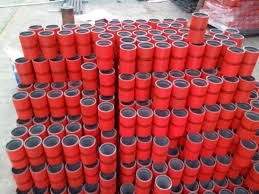- Afrikaans
- Albanian
- Amharic
- Arabic
- Armenian
- Azerbaijani
- Basque
- Belarusian
- Bengali
- Bosnian
- Bulgarian
- Catalan
- Cebuano
- Corsican
- Croatian
- Czech
- Danish
- Dutch
- English
- Esperanto
- Estonian
- Finnish
- French
- Frisian
- Galician
- Georgian
- German
- Greek
- Gujarati
- Haitian Creole
- hausa
- hawaiian
- Hebrew
- Hindi
- Miao
- Hungarian
- Icelandic
- igbo
- Indonesian
- irish
- Italian
- Japanese
- Javanese
- Kannada
- kazakh
- Khmer
- Rwandese
- Korean
- Kurdish
- Kyrgyz
- Lao
- Latin
- Latvian
- Lithuanian
- Luxembourgish
- Macedonian
- Malgashi
- Malay
- Malayalam
- Maltese
- Maori
- Marathi
- Mongolian
- Myanmar
- Nepali
- Norwegian
- Norwegian
- Occitan
- Pashto
- Persian
- Polish
- Portuguese
- Punjabi
- Romanian
- Russian
- Samoan
- Scottish Gaelic
- Serbian
- Sesotho
- Shona
- Sindhi
- Sinhala
- Slovak
- Slovenian
- Somali
- Spanish
- Sundanese
- Swahili
- Swedish
- Tagalog
- Tajik
- Tamil
- Tatar
- Telugu
- Thai
- Turkish
- Turkmen
- Ukrainian
- Urdu
- Uighur
- Uzbek
- Vietnamese
- Welsh
- Bantu
- Yiddish
- Yoruba
- Zulu
casing and tubing connections
Casing and Tubing Connections An Overview
In the oil and gas industry, casing and tubing connections serve as critical components for the success of drilling operations, ensuring structural integrity and facilitating safe hydrocarbon extraction. Understanding these connections is essential for engineers, technicians, and anyone involved in well construction or maintenance.
Casing refers to the series of pipes that are installed within a borehole to provide stability and protect the well from collapse, while also preventing contaminants from entering the water table. After drilling, casings are set into the wellbore at various depths depending on geological conditions. The most common types of casing include surface casing, intermediate casing, and production casing. Each type serves distinct purposes surface casing protects groundwater, intermediate casing isolates different formations, and production casing is utilized for hydrocarbon extraction.
Tubing, on the other hand, is a smaller diameter pipe through which the hydrocarbons flow from the well to the surface. It is installed inside the production casing, connecting the reservoir to the surface facilities. Tubing is designed to withstand the pressure and corrosive properties of the hydrocarbons, and its selection is crucial for optimizing production rates and well integrity.
The connections between casing and tubing are vital and must be executed with precision. These connections can take various forms, including threaded, welded, and special connectors designed for high-stress scenarios. The choice of connection type depends on several factors, including the pressure, temperature, and the specific application of the well.
Threaded Connections are commonly used due to their ease of installation and versatility. In threaded connections, two pipes are joined by screwing them together, with a sealant often applied to prevent leaks. However, threaded connections require meticulous handling to prevent cross-threading or over-torquing, which can lead to failure.
casing and tubing connections

Welded Connections offer enhanced strength and are often utilized in high-pressure applications. In this method, the ends of two pipes are melted and fused together through welding, creating a continuous steel structure. While they are resistant to leakage, they require skilled labor and proper equipment to ensure the integrity of the weld, along with adequate safety measures to manage risks associated with heat.
Special Connectors, such as bow tight connectors or slip-on connectors, provide additional solutions for specific challenges. These innovation-driven designs can accommodate the thermal expansions and contractions that occur in deep wells or high-temperature environments. Advanced engineering techniques have led to connectors that can withstand extreme conditions, enhancing the reliability of drilling operations.
The materials used for casing and tubing connections often include carbon steel, stainless steel, and various alloy grades tailored for specific environments. Selecting the right material is crucial in ensuring durability and longevity, especially in the presence of corrosive fluids or high pressure. Protective coatings and treatments can also enhance the lifespan of the connections.
One of the most significant challenges in the maintenance of casing and tubing connections is the potential for wear and tear, which can lead to failures such as leaks or bursts. Regular inspections, advancements in monitoring technologies, and rigorous maintenance protocols are essential in mitigating these risks. Techniques such as ultrasonic testing and magnetic particle inspection are employed to assess the integrity of the connections without compromising their functionality.
In recent years, there has been an increasing focus on the environmental impacts of oil and gas extraction, leading to more stringent regulations in connection design and installation. It is crucial to ensure that casing and tubing connections are not only strong and reliable but also environmentally responsible, minimizing the risk of contamination and ensuring the safety of surrounding ecosystems.
In conclusion, casing and tubing connections play an indispensable role in the oil and gas industry. Their design, installation, and maintenance require a deep understanding of engineering principles and geological conditions. As technology advances and environmental awareness heightens, the industry must adapt, ensuring that these critical connections continue to perform safely and efficiently while minimizing their environmental footprint.
-
Well Casing Extension Couplings – Applications and InstallationNewsJun.06,2025
-
Types of Crossover Subs in Drilling & CompletionNewsJun.06,2025
-
Key Features of High-Quality Tubing Pup JointsNewsJun.06,2025
-
Installation and Maintenance Tips for Steel Couplings for PipeNewsJun.06,2025
-
How to Select the Right Pup Joint for Oil & Gas OperationsNewsJun.06,2025
-
Applications of Stainless Steel Pipe CouplingsNewsJun.06,2025







